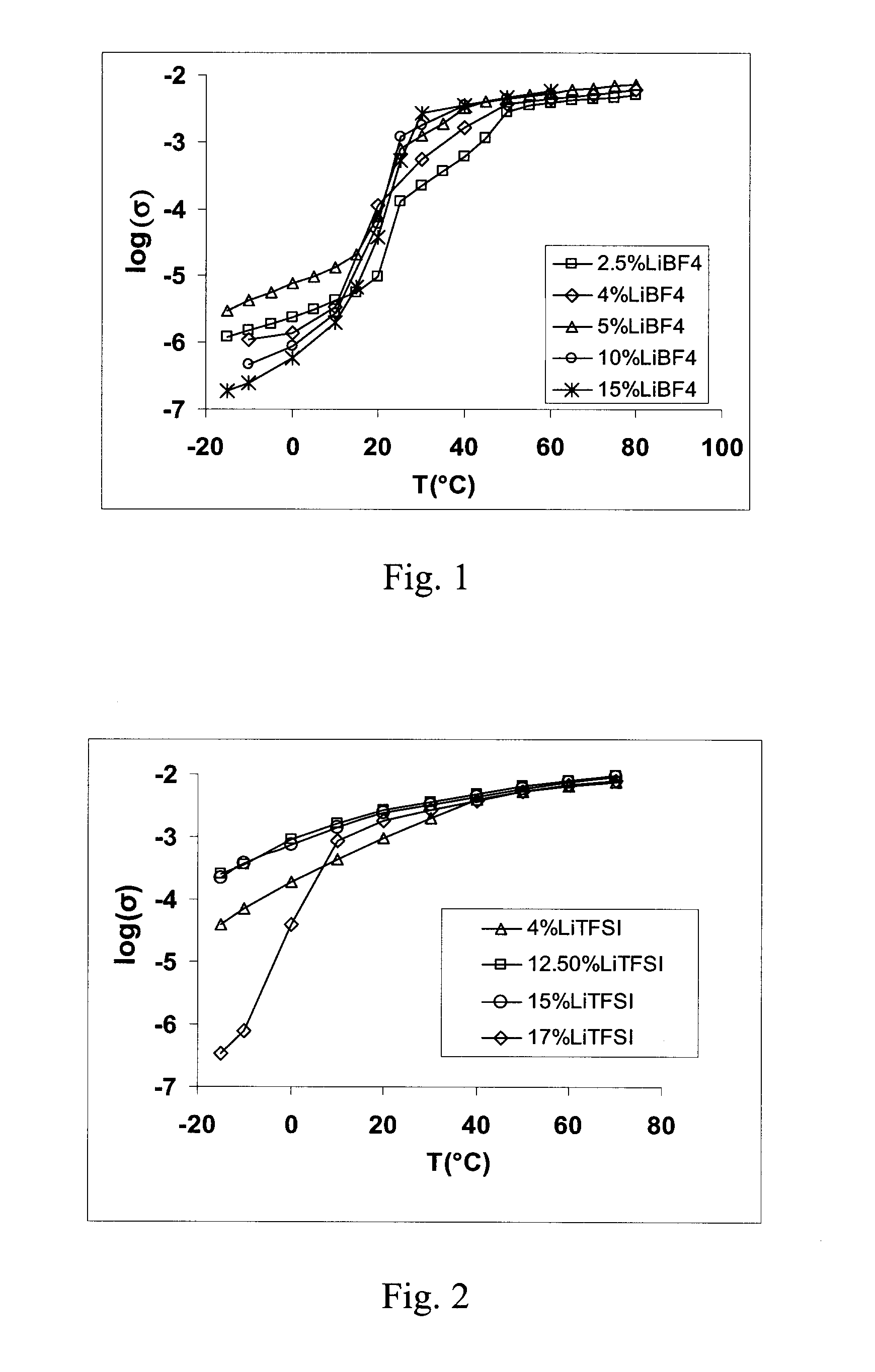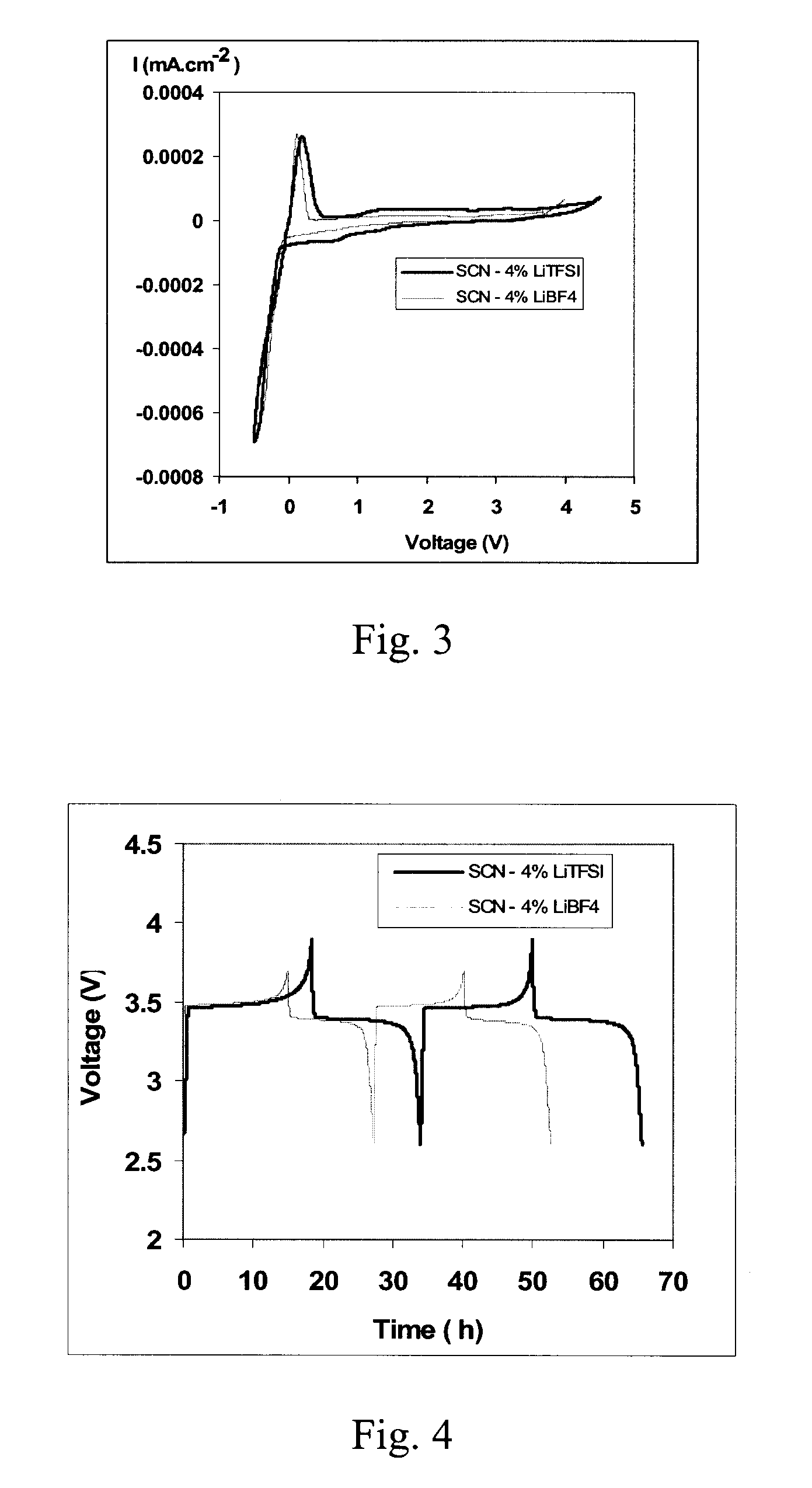Plastic crystal electrolyte for lithium batteries
a technology of lithium batteries and crystal electrolytes, applied in the direction of non-aqueous electrolyte cells, cell components, electrochemical generators, etc., can solve the problems of low conductivity at room temperature, low conductivity, cost and safety, etc., and achieve good conductivity
- Summary
- Abstract
- Description
- Claims
- Application Information
AI Technical Summary
Benefits of technology
Problems solved by technology
Method used
Image
Examples
example 1
[0026]2.3066 g succinonitrile (NC—CH2—CH2—CN) and 0.1125 g of lithium tetrafluoroborate (LiBF4) were mixed, heated until melting and then cooled to make a solid solution of composition 96% SCN-4% LiPF4 (based on mol %). This compound was shown by differential scanning calorimetry (DSC) to have a melting point of 51° C. and to exhibit crystal plastic phase behaviour between −35° C. and 51° C. The characterization of the compound's conductivity versus temperature is provided in Table 1 below. The same data is plotted in FIG. 1.
TABLE 1Temperature (° C.)−100102030405060log10−5.95−5.86−5.46−3.96−3.26−2.79−2.43−2.35(Conductivity)
example 2
[0027]Mixtures of LiBF4 and succinonitrile were prepared as in Example 1 for compositions of 2.5 mol %, 5 mol %, 10 mol % and 15 mol % LiBF4. Measured conductivities as a function of temperature are shown in FIG. 1 as a plot of log conductivity (S / cm) versus temperature (° C.).
example 3
[0028]2.3066 g succinonitrile (NC—CH2—CH2—CN) and 0.3445 g of lithium bis-trifluoromethanesulphonylimide Li(CF3SO2)2N (sometimes abbreviated as LiTFSI) were mixed, heated until melting and then cooled to make a solid solution of composition 96% SCN-4% Li(CF3SO2)2N (based on mol %).
[0029]This compound was shown by DSC to have a melting point of 58° C. and to exhibit crystal plastic phase behaviour between −36° C. and 58° C. The characterization of the compound's conductivity (S / cm) versus temperature is provided in Table 2 and plotted in FIG. 2.
TABLE 2Temperature (° C.)−100102030405060log10−4.16−3.72−3.36−3.02−2.71−2.40−2.28−2.19(Conductivity)
PUM
| Property | Measurement | Unit |
|---|---|---|
| electrochemical potential | aaaaa | aaaaa |
| electrochemical potential | aaaaa | aaaaa |
| electrochemical potential | aaaaa | aaaaa |
Abstract
Description
Claims
Application Information
 Login to View More
Login to View More - R&D Engineer
- R&D Manager
- IP Professional
- Industry Leading Data Capabilities
- Powerful AI technology
- Patent DNA Extraction
Browse by: Latest US Patents, China's latest patents, Technical Efficacy Thesaurus, Application Domain, Technology Topic, Popular Technical Reports.
© 2024 PatSnap. All rights reserved.Legal|Privacy policy|Modern Slavery Act Transparency Statement|Sitemap|About US| Contact US: help@patsnap.com










